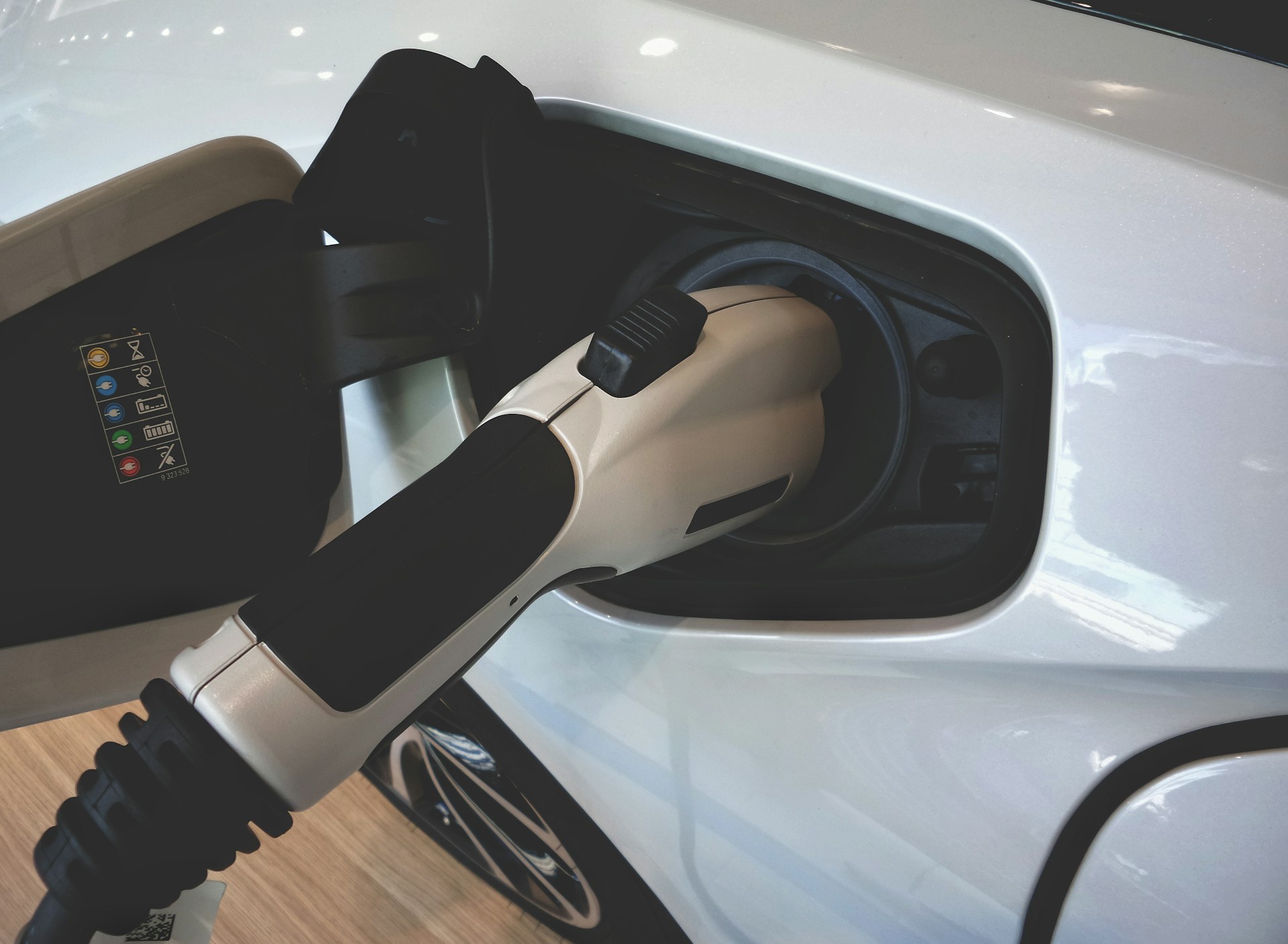
What Role does Energy Storage play in Renewable Energy?
26 Mar, 20248 minAs the world grapples with the urgent need to transition towards sustainable energy sources,...

As the world grapples with the urgent need to transition towards sustainable energy sources, the pivotal role of energy storage in renewable energy solutions comes to the forefront. From surpassing $337 billion in 2022, energy storage has the potential to bridge the gap between fluctuating renewable energy production and consistent demand.
Within the world of energy storage, there are a range of technologies and innovations, each playing a crucial role in reshaping our energy landscape. In this guide, we’ll explore what energy storage is and its various types. We’ll also lean our focus to what we know best - battery and energy storage - including the benefits of this type of energy storage and the transformative impact it promises for a greener and more sustainable future.
In this guide, we’ll explore:
- What is energy storage?
- What are the different types of energy storage?
- The core benefits of battery energy storage systems
What is energy storage?
Battery and energy storage refers to the capability of capturing energy at one point in time and utilising it later when required. Various storage devices and methods are designed to retain power, whether chemical, thermal, or kinetic energy.
Once stored, this energy can be recycled into valuable energy sources, such as electricity to power homes and decarbonise transportation, to ultimately bridge the gap between clean energy sources and the substantial electricity demands of modern society.
Energy storage systems offer the advantage of separating energy consumption from energy production. One significant form of energy storage capacity most commonly used is in pumped hydroelectric systems. However, the usage of battery systems is experiencing rapid acceleration. Overall, there’s a diverse range of storage technologies currently in use, which we’ll delve into in our next section.
Renewable energy storage innovations are instrumental for companies and industries in conserving energy, enabling them to meet increased demand or mitigate the impact of grid outages. By doing so, energy storage ensures a consistent supply-demand balance for consumers, preventing issues like inconsistent power supply and sudden price surges.
The importance of managing energy storage is also on the rise, especially in information and communication technology sectors, as it facilitates the storage of energy stemming from renewable sources like solar and wind. Certain types of energy are more practical to store than others, so various energy storage processes are used to convert and store different forms of energy.
What are the different types of energy storage?
The renewable energy storage industry is diverse and employs various technologies to capture, store, and release energy as required. From pumped hydroelectric, compressed air, flywheels, thermal energy storage and batteries, here are the different types of energy storage technologies you should know about.
Pumped Hydroelectric
Pumped hydroelectric or pumped hydro systems stand as the most used type of energy storage. This system harnesses the power of kinetic energy taken from the downward motion of water, which is collected through turbines or pumps. These turbines or pumps are instrumental in converting kinetic energy produced by flowing water into usable electrical power. As of 2022, the global pumped hydro energy storage exceeded 135 GW.
At its core, the functionality of pumped hydroelectric energy storage systems is the dual reservoirs, consisting of an upper reservoir and a lower one. The upper reservoir acts as the storage space, containing water that can be released when electricity generation is needed. In contrast, the lower reservoir serves as the recipient, collecting the water that has passed through the turbines or pumps.
The cyclical flow of water between these two reservoirs lays the foundations of this system's energy storage mechanism. Pumped hydroelectric energy storage systems can be closely compared to conventional hydroelectric dams. In the case of dams, the stored water is released when there is peak demand, powering turbines as the water descends, producing electricity.
As dams have long been the face of hydroelectric energy production, pumped hydroelectric systems demonstrate the adaptability and scalability of the technology. While the technology gained traction in the early to mid-1900s, the prowess of pumped hydro systems has grown over the decades, establishing them as the predominant form of global utility-scale energy storage.
The widespread adoption of this type of energy storage underscores its reliability, efficiency, and capacity to meet the demands of modern energy grids. In essence, the 'stored energy' in these systems isn't in the water itself but in the energy potential it possesses due to its elevated position in the upper reservoir. The release of this water to the lower reservoir converts this potential energy into the electrical energy we utilise.
Compressed Air Energy Storage
Compressed air energy storage, or CAES, draws parallels with the principles underlying hydroelectric storage. CAES capitalises on the unique properties of compressed air as a medium to store and subsequently generate electricity when needed.
Fundamentally, the process of compressed air energy storage involves capturing air from the surrounding environment or utilising other compressed gases. The captured air is then subjected to compression, achieving pressures reaching staggering magnitudes of up to 1,000 pounds per square inch. The compressed air is secured in designated storage sites, predominantly underground caverns, harnessed from natural formations or artificial reservoirs.
Within the process of CAES, the pivotal moment arises when the stored energy is called upon to meet the demands of the grid. A heat source is activated to harness the potential power stored in the pressurised air. This activation propels the compressed air into an expansion turbine, a critical component that drives a generator. The synergy between the expansion turbine and the generator culminates in converting the compressed air's potential energy into electrical energy.
Compressed air energy storage is an efficient, scalable, and adaptable type of energy storage system. By leveraging underground storage, CAES systems can accommodate vast amounts of compressed air and convert it into substantial energy reserves. This reservoir of stored energy can be tapped into during periods of peak demand, ensuring a reliable and responsive energy supply.
CAES seamlessly intertwines the principles of thermodynamics with practical applications. Through its intricate yet efficient mechanism, CAES exemplifies the strides being made in diversifying and optimising energy storage solutions for a sustainable future. In 2022, the compressed air energy storage market surpassed $900 million and is set to rise at a CAGR of 13% between 2023 and 2032.
Flywheels
Flywheels represent a fascinating convergence of physics and engineering and serve as a distinctive player in the energy storage solutions space. At the centre of a flywheel system lies a simple yet profound concept - converting electrical energy into kinetic rotational energy.
The journey of kinetic energy within a flywheel starts with the application of electricity to accelerate a specialised rotor, commonly known as the flywheel. This process permeates the flywheel with kinetic energy created by rapid rotational motion. The rotational force of the spinning flywheel is harnessed to drive a generator, producing the conversion of the stored kinetic energy back into electrical power.
Modern flywheels often leverage magnetic bearings, a technological marvel that minimises friction and facilitates smooth rotation. Additionally, these flywheels mitigate drag by operating within a vacuum environment, enabling them to achieve astounding rotational speeds, reaching up to 60,000 revolutions per minute.
Flywheels deliver power swiftly and efficiently, making them ideally suited for applications necessitating rapid energy absorption and release. Typically, these systems are designed to support high-power operations for durations spanning up to 15 minutes. However, ongoing technological advancements are paving the way for the development of extended-duration flywheel systems.
The versatility of flywheels extends beyond mere energy storage; they serve as indispensable assets in maintaining grid stability. Flywheels can balance electricity supply and demand fluctuations by promptly responding to control signals, often adjusted in seconds. This capability is particularly invaluable in critical manufacturing processes where even a momentary interruption could culminate in substantial losses.
Thermal Energy Storage
With an estimated global market value of over $4 billion, recorded in 2022, thermal energy storage harnesses the intrinsic properties of materials, capturing and later releasing heat or cold as required. This form of energy storage revolves around the modulation of heat or cold within solid, liquid, or gas mediums, often involving transitions between these states, such as from gas to liquid or solid to liquid.
Among the standout technologies in this domain is utilising molten salt and liquid air, also known as cryogenic storage. Molten salt, in particular, has carved a niche, especially with concentrated solar power systems. This synergy allows the capture of solar-generated heat, which can be stored in molten salt and tapped into when the sun's rays are absent.
The beauty of thermal energy storage lies in its versatility, manifested in various systems designed for different applications. For example, the role of ice storage in buildings is capitalised on off-peak electricity to freeze water. These systems diminish the reliance on compressors during peak hours, ensuring efficient air conditioning over extended durations.
Similarly, chilled water systems and dispatchable hot water heaters exemplify the adaptability of thermal storage, accommodating diverse energy demands and consumption patterns.
In summary, thermal energy storage encapsulates a range of technologies and methodologies, each contributing to the broader goal of enhancing energy efficiency and resilience. These systems exemplify the innovative strides in sustainable energy solutions by closing the gap between energy generation and consumption. The diversity of energy storage technologies allows for flexibility in meeting the varying demands of the energy landscape, contributing to a more sustainable energy future.
Battery and Energy Storage
Last but certainly not least on our list of the different types of energy storage is battery and energy storage. Batteries are progressively solidifying their position as the cornerstone of energy storage, permeating various facets of our daily lives, perhaps without many of us knowing.
The ubiquity of battery energy storage systems is undeniable, from the devices we carry in our pockets to the vehicles we drive and the infrastructure supporting businesses. Their capabilities lie in seamlessly converting and storing electrical power as chemical energy, ready to be reconverted into electricity when needed.
Battery energy storage is a vast and diverse niche within the renewable energy sector, offering solutions tailored to specific needs and applications. Among the notable variants of batteries are lead-acid batteries, alongside emerging contenders like metal-air and sodium-sulfur batteries.
Lithium-ion (Li-Ion) batteries have emerged as frontrunners, boasting attributes including heightened efficiency, commendable energy density, and impressive power output. Their ascendancy to the top of battery energy storage can be attributed to their pivotal role in powering the surging electric vehicle industry and the continued reliance on portable electronic devices.
Understanding the anatomy of a battery can be defined as an amalgamation of one or more cells, each featuring a cathode (positive terminal) and an anode (negative terminal). This fundamental structure underscores the workings of batteries, enabling the conversion and storage of energy.
Diving deeper into the chemistry of batteries reveals a plethora of compositions catering to diverse applications. While lithium-ion and lead-acid batteries have stamped their mark in portable electronics and automotive sectors, other batteries like nickel-cadmium and sodium-sulfur continue to make strides. On the horizon, we may also see the rise of zinc-air batteries, which can be used to power mobile devices, hearing aids and other medical technologies.
Additionally, a significant subset within the battery and energy storage domain is the niche of flow batteries. These batteries stand apart with their liquid electrolyte solutions, encompassing variants like iron-chromium, vanadium redox and zinc-bromine chemistries. Their unique design offers flexibility and scalability, positioning them as contenders in large-scale energy storage applications.
While distinct from conventional batteries, supercapacitors also bear a mention within the battery and energy storage spectrum. These types of batteries can deliver rapid responses, making them invaluable for applications demanding sub-minute energy delivery.
Globally, the total installed capacity of electricity generated from battery and energy storage is predicted to reach around 945 GW by 2050. Additionally, the market of battery energy storage, estimated to be approximately just over $5 billion, is expected to exceed $17 billion in 2028 - making this type of energy storage a frontrunner in the world’s desire to hit net zero targets.
The core benefits of battery energy storage systems
While we've acknowledged the different types of energy storage solutions, the ones we specialise in from a recruitment standpoint are battery and energy storage technologies. Therefore, we've highlighted the core benefits of battery energy storage systems to outline why energy storage is essential to the future of renewable energy and the planet's sustainability.
- Improved usage of renewable energy
We know that solar and wind power is intermittent. Energy storage can harness renewable energy when it's abundant and use it during periods of low or no energy production. This optimises the use of renewable resources, making energy consumption more efficient year-round. - Backup power
Battery energy storage systems serve as reliable backup power sources during severe weather conditions or prolonged periods of power blackouts. This benefits businesses by ensuring uninterrupted operations and provides security and convenience for homes during power outages. - Less dependence on the grid
Another one of the benefits of battery energy storage systems is that they can reduce the dependency on the grid. This is especially valuable in regions with unstable grid infrastructure or locations with frequent power outages. As climate uncertainties rise, being less reliant on the grid becomes essential for sustained energy access. - Frequency control and peak shaving
As mentioned, battery energy storage systems contribute to grid stability by regulating frequency and providing sub-second frequency response. Additionally, storing energy during low-demand periods and releasing it during peak periods helps in peak shaving, reducing strain on the grid. - Reduced carbon footprint
Coupled with renewable energy, battery energy storage systems can significantly reduce greenhouse gas emissions and minimise pollution. Their ability to store excess energy ensures no power goes to waste, aligning with global efforts to achieve net-zero emissions and combat climate change. - Long-term cost savings
While the initial installation cost of battery energy storage systems may be substantial, the long-term savings on electricity bills and added value to homes and businesses make it a financially valuable investment. The flexibility of energy usage also contributes to cost savings over time. - Co-location of assets
Battery energy storage systems can also co-locate with various energy generation technologies. This helps maximise land use, improve efficiencies, and share infrastructure expenditure to enhance the overall effectiveness of energy production.
Energy storage, especially in the form of battery systems, is pivotal to the transition to a more sustainable, reliable, and cost-effective energy future. Not only does it present renewable energy jobs and talent, but it also addresses the challenges posed by the variability of renewable resources and enhances the overall efficiency of energy consumption.
Final thoughts on the role of renewable energy storage
Within this guide on the exploration of energy storage within renewable energy, we've outlined the different types of energy storage technologies that not only bolster our energy infrastructure but also pave the way for a sustainable future. The energy storage space is vibrant and promising, from the foundational principles of pumped hydroelectric and compressed air energy storage to innovative flywheels, thermal energy storage, and battery technologies.
We then delved deeper into our area of expertise, battery, and energy storage. This diverse energy storage solution poses many benefits, from addressing the challenges of intermittency in renewable energy to redefining our grid's reliability and resilience.
As we continue with the energy transition, the significance of energy storage cannot be overstated. It has the potential to take the world towards a more efficient and sustainable energy ecosystem for generations to come.
Looking to grow in the renewable energy industry?
With over 20 years at the forefront of the renewable energy industry, we stand as a frontrunner for innovative organisations and talented professionals aiming to make their mark in the niche field of battery and energy storage. Our specialist consultants are adept at facilitating connections, enabling clients and candidates to thrive in groundbreaking global renewable energy ventures.
Whether you're in search of unparalleled talent acquisition services to bolster your team or are eager to discover the latest career avenues by registering for the latest jobs, we're here to guide you.
Alternatively, contact us today if you’re looking for further support regarding your latest projects or future career aspirations.









